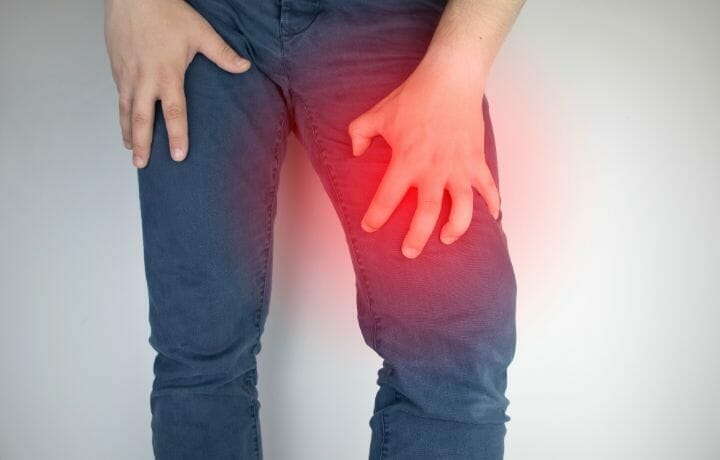Post hip-replacement surgery involves frequent follow-up with your doctor, pain, nutrition, and movement. Significant concerns that are to be addressed are comorbidities, functioning, pain, adaptability to the new hip.
With time, patients recover from the surgery. Fast recovery is mainly seen in active and young patients. But the older adults take time to recover and adapt to the surgery.
A study conducted by the Oxford hip replacement says that good functional outcomes are observed in the patients who have undergone surgery 5-16 years ago. These results are based on comparing the patients who have not got the surgery after 80 years old.
The patients must take precautions after the surgery: they should not bend the knees or hips more than 90 degrees, shouldn’t cross the legs, and lift them while putting the socks on. Doing any of these will dislocate the hip after the surgery, and it is important to protect the hip. With time, the restrictions can be avoided when the pain starts reducing and when it is permitted to bear the weights.
How To Deal With The Pain After Hip Replacement
Patients will experience pain once they return home after the surgery. The physician will remove the bandage at the site after some days. Handling the pain is hard as healing takes time, and there are many restrictions on movements after the surgery.
Medications, therapy, and home relief are prescribed for the patients by the physicians in the first weeks. The therapist who works on the pain site will slowly determine and tell how long the movement restrictions have to be followed.
Every patient may not recover soon, and some may complain of pain at the site for more weeks. In such cases, medicines like paracetamol and NSAIDs should be used longer based on the instructions of the physician. But, this will extend the time for the overall recovery of the patient.
Any kind of exercise or therapy the patient uses will have a stipulated period to work best and give results. Electrical stimulation mechanisms are also used to address the surgery site for relief.
You may also like How Long Do You Have To Use A Raised Toilet Seat After A Hip Replacement?
How to manage the Wound, Infections, and Blood Flow After Surgery?
If you want to avoid infections at the wound site, then you should keep it clean and dry. Infections are rarely seen in the patients, their wound heals quickly, and there is an increase in the movements also.
You may see a bruise at the wound site, which will disappear on its own. You may see redness at the incision site on the skin, which is nothing to worry about. It will take 14 days to remove the stitches. Regular checkup of the wound is essential if the infection is to be avoided.
Talking about infections, you may see a change in size and shape of the wound, discharge at the wound site, foul smell from the wound, and it may appear to be macerated. If you experience any of these conditions, consulting the doctor immediately is essential. If these are not addressed, the recovery period will increase, stalling the healing of the wound.
Other indicators of an infection are:
- Increasing pain with both activity and rest.
- Drainage from the wound
- Increasing tenderness, redness, or swelling of the wound
- Shaking or chills
- Persistent fever (higher than 101.5 degrees)
- Swelling in the leg.
Clotting of the blood may be seen at the surgery site. To avoid this, anticoagulants may be prescribed to the patients. Having a good blood flow at the surgery site is essential.
If you have blood vessel diseases or heart issues, then you should regularly check if you have an inability of leg movement, pulsating cramp, or redness on the leg. This indicates that there is insufficiency in the peripheral vascular or thrombosis in the vein. You must immediately shift to the hospital in this situation.
What Should You Eat After The surgery?
Diet and nutrition have a significant role in determining the patient’s recovery rate, strength, and weight management. If the person is obese, it may impact the new hip burdening it.
You can make changes to your diet and reduce some weight before the operation to avoid any issues post the surgery. Similarly, if undernourished, diet changes should be made to get the patient stronger.
Eating nutrient-rich food will fasten the recovery process. Some of the foods which will help you in maintaining a good diet post-surgery are:
- Fiber: Eating fiber-rich food will help in promoting regular bowel movements in the body.
- Calcium: Eating Calcium-rich food will help in building and maintaining the bones, muscles movement, preventing blood clots, and easy message delivery through the nerves.
- Vitamin C: Vitamin C will help repair the damaged tissues in the body, keeps teeth and bones stronger, and help in absorbing iron.
- Iron: Iron will work on each body cells to make energy.
- Protein: Protein will help in repairing and building healthy tissue.
You may also like Best Protein Shakes For Seniors
How to address Displacement and Loosening Concerns
Displacement and loosening are significant concerns in patients even after they regain motion and strength after the surgery.
A study in 2013 detected loosening of the radiographic component has increased before four years of the revision surgery. After two years, there was a major increase in pain in the hips from 15%-80% in the revision year.
There was a deterioration in the walking capacity three years before the revision surgery, and during the revision year, 65% of patients will not be able to walk longer than thirty minutes.
These vary from patient to patient. If you want to prevent displacement or loosening, then you should always follow the functional limitations.
There are chances of displacement because of improper positioning of the hips, repeated falls, or faulty body mechanics. Remember to check your capacity to bear weight and be in contact with the doctor.
Some signs which indicate displacement or loosening of the hips are:
- The sensation at the knee giving out when you place weight on it or swelling in and around your replacement knee joint.
- Full hip dislocation
- Partial hip dislocation
- The sensation that your joint is moving in and out of its socket
- Popping or clicking sound
- Pain on the hip area and unable to give weight
What are the Functional Limitations After Hip Replacement?
We have already discussed limitations and precautions of movement, which are to be followed by the patient after the surgery for better healing with no significant concerns.
The limitations and precautions will come down with time as the mobility and strength will increase because of diet, medicines, and therapy.
If you want to avoid loosening after the replacement, then you should avoid the stress on the surgery site. As the hip joint bears the body weight, it is important to maintain your weight. More weight will increase the stress on the hip, loosening the joint.
If the replacement is an uncemented one, there are chances of brittleness at the surgery as the site is sensitive and hard for re-surgery. If the prosthesis used is cemented one, it is common, and still, the movement has limitations but has the best results.
It is tough to use the toilet by sitting after the surgery during the recovery period. It is better to get raised toilet seats and hip chairs to avoid major discomforts and pain after the surgery.
Activities like diving, jumping, and weight lifting are prohibited after the surgery, as displacement and loosening may occur if performed using poor body mechanics.
You can do activities like skiing, double tennis, golf, horseback riding, dancing, and bowling only after 2-3months after the surgery after consulting the doctor once.
You may also like When Can I Sit On A Normal Chair After Hip Replacement?
Which Assistive Devices Will Improve Walking?
After the surgery, assistive devices are given to the patients to reduce the bain and handle restrictions on weight-bearing. Weight-bearing is dependent on the patients’ recovery and is a gradual process. Over time, when mobility and strength increase and it is permitted for full weight-bearing, these can be avoided.
Balance is a significant concern in the elderly. Older adults make use of the walker when they want assistance. Some may replace the walker with a cane. Whereas active and young patients make use of crutches rather than walkers or canes.
Slowly, they will reduce the usage of crutches also. When the doctor prescribes assisted device, you can also look for the best quality devices of walkers and canes here.
Post-Hip Replacement Care is A Long Process. Follow The Rules And You Will Ensure Success.
Based on the surgeons’ opinions, hip replacement may last for 15-20 years, depending on your daily activities, weight, age, and living style.
Regular follow-up with the doctors for checkups and updating the status will help them make decisions to speed up the recovery. Procedures like MRI and X-Ray are essential to check if there is displacement or loosening.
If you face issues like calf pain, open surgical wound, redness on the surgery site, draining at the incision, or temperature over 101.5, you should immediately meet your doctor.
Staying in touch with the physicians will help you address if you are facing any other concerns in your hip replacement surgery. The comment section below will help us know your views and suggestions. Do comment today!






